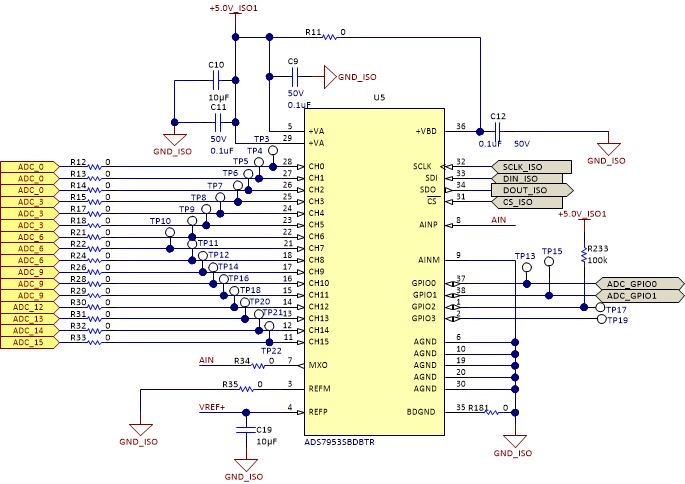TIDU858C March 2015 – May 2021
- Description
- Resources
- Features
- Applications
- 5
- 1System Description
- 2Design Features
- 3Circuit Design and Component Selection
- 4Testing
- 5Design Files
- 6References
- Trademarks
- 7About the Author
- 8Revision History
3.1 Analog-to-Digital Converter (ADC)
To optimize binary input module cost profile, a 12-bit, 16-channel ADC is selected to perform binary input conversion to a host processor.
 Figure 3-1 ADC Configuration for
Measuring Multiple Channels
Figure 3-1 ADC Configuration for
Measuring Multiple ChannelsThe ADC considered is the 12-bit, 16-channel, 1-MSPS, single-ended ADS7953 (see Figure 3-1). The 4–16 multichannel ADS795x family allows for auto or manual sequencing of preselected channels for the next conversion cycle. Typically at lower conversion speeds, these devices can draw 1-µA (typical) current while in power-down mode. If desired, additional signal conditioning circuitry may be applied to the MXO and AINP pins. Two programmable alarms may be utilized as well.
The ADC can operate with an external 2.5 V, ±10-mV reference that produces a clean, low-noise, and well-coupled signal. The REF5025 voltage reference with a 10-µF ceramic decoupling capacitor provides sufficient analog integrity for reliable operation.